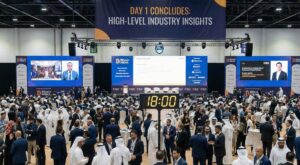In recent years, blockchain technology has gathered a lot of attention and is frequently linked to cryptocurrencies like Bitcoin. Beyond digital currency, Blockchain also has other uses and a key distinction in the blockchain community is between public and private blockchains. In order to make the significant differences between these two kinds of blockchains easier to understand, we’ll examine them in this essay using concrete examples and data that can be linked to them.
Public vs. Private Blockchain
Access Management
Anyone can access a public blockchain. The network is open to anyone wanting to join, participate in consensus processes like mining, and validate transactions. A public blockchain is not under the jurisdiction of a single organization.
A good illustration of a public blockchain is Bitcoin. Without authorization, anyone may create a wallet, mine for new coins, and participate in peer-to-peer transactions.
On the other hand, a private blockchain only allows a small number of users to access it. The network is more centralized than public blockchains because these participants are frequently well-known and reliable parties.
An illustration of a private blockchain framework is Hyperledger Fabric. Businesses and consortiums utilize it to create permissioned networks for certain use cases.
Permission levels
In the case of Public Blockchain, it lacks any authorization. This indicates that no permission is required for participation. The network runs in a trustless environment, and transactions and smart contracts are accessible to everyone.
As an illustration, developers can create decentralized applications (DApps) and launch smart contracts on the public Blockchain Ethereum without obtaining authorization from a higher authority.
Whereas Private Blockchain permission is required for private blockchains. The network requires applicants to apply for membership. It is suited for applications requiring rigorous access control since participation and access are regulated.
For instance, JPMorgan’s Quorum, a private blockchain, is used for interbank transfers and other financial transactions, and only approved banks are allowed to participate.
Consensus Mechanisms
Public Blockchain can be used to confirm transactions; public blockchains frequently employ energy-intensive consensus procedures like Proof of Work (PoW) or Proof of Stake (PoS). In a situation when there is no trust, these procedures are intended to maintain network security.
With Bitcoin, for instance, miners must solve challenging mathematical riddles in order to add new blocks to the Blockchain.
Whereas for Private Blockchain, Unlike public blockchains, which must reward anonymous participants, private blockchains typically choose more efficient consensus techniques. Practical Byzantine Fault Tolerance (PBFT) and Raft are typical consensus approaches.
As an illustration, Hyperledger Fabric uses a form of PBFT to achieve consensus among its authorized participants.
Conclusion
In conclusion, there are substantial differences between public and private blockchains in terms of access control, permission levels, consensus techniques, transparency, and use cases. While private blockchains emphasize limited access and data privacy, public blockchains prioritize decentralization and openness. When selecting the best blockchain solution for a particular application or business use case, it is critical to be aware of these differences.




























